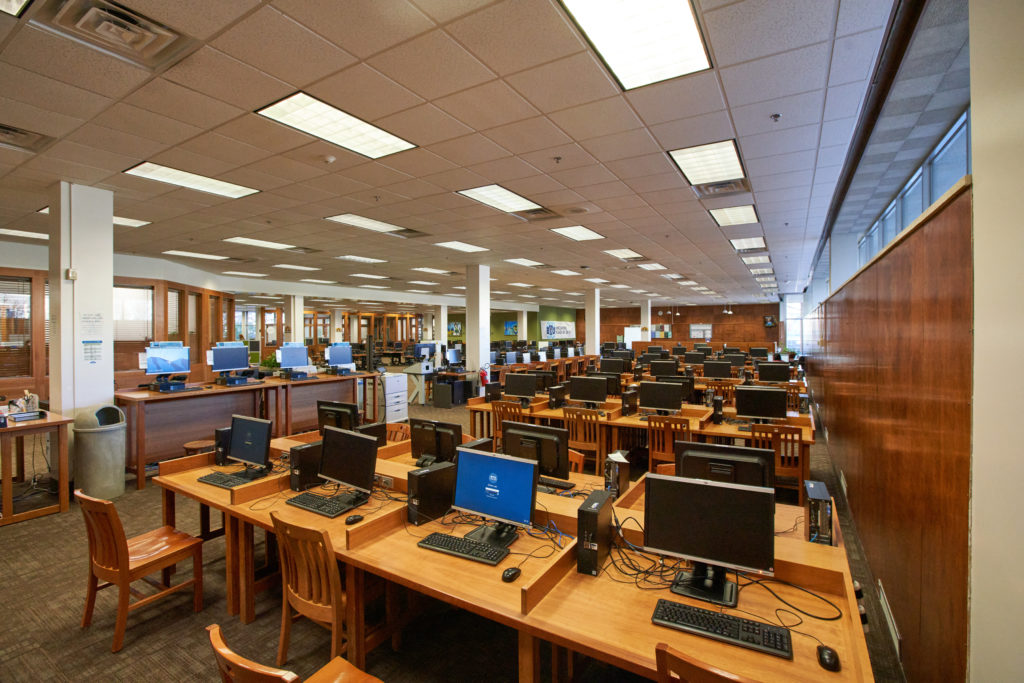Online classes have proved difficult for professors and students around the world, but BYU professors are finding new ways to help students learn and are recognizing unanticipated benefits from the move to remote learning.
Problems for students
Many classes that would typically be taught in person involve labs and activities that are difficult to share through online platforms. Professor Jamie Wood is teaching an experiential dance class Spring Term, and she said the experiential parts of the class have to be done individually by the students, which makes it harder to give feedback and learn from each other.
These kinds of problems have had an interesting outcome at universities across the country. There have been multiple court cases since schools started shutting down for COVID-19 in which students have sued their universities for a partial-tuition refund, because they say they are missing out on many of the experiences that a university education normally offers.
Another problem with online learning results from the nature of video communication. Some studies have shown that video conferencing calls have a tendency to make participants feel more tired and less connected to the people they’re talking to.
This difficulty in communication arises from the fact that human brains are constantly trying to read small changes in facial expressions and other movements as a way of determining the state of a conversation. When these small details are distorted through video channels, the subconscious ends up working harder without achieving the desired results, thus leaving people feeling tired and isolated. In a classroom setting, this can mean students are more likely to zone out and miss parts of the lecture.
Mike Johnson, a consultant at BYU’s Center for Teaching and Learning, said professors have noticed this difference in how engaged students are in classes.
“The more instructors do to give students meaningful ways to engage with them, their classmates, and the content, the better the experience typically becomes,” Johnson said.
Richard Swan, associate director at the CTL, said this trouble connecting has caused problems for professors as well. He said most faculty are used to adapting their lessons based on comments and non-verbal cues from students, and doing lectures online makes teaching much more difficult.
“It can be disconcerting to be talking to an audience you cannot see. When that happens, some of the passion faculty feel for their subject and the care and concern they feel for their students do not come through,” Swan said.

Solutions from professors
School of Communications Director Ed Carter has been teaching online classes since 2015 and said in his experience there has to be a different approach to online classes than there is to normal classroom learning. He said for him it works best to focus on learning outcomes and how those can best be achieved in the online environment.
“I don’t micromanage students and what they do. I just give them a little upfront information about what the expectations are, and then however they get there is fine with me,” Carter said.
Carter said he likes to provide students with various options for their learning, such as holding live lectures but also recording them to give students the opportunity to go back and watch them later if needed.
According to Johnson, professors have found many ways of communicating with and engaging their students, including using apps like Marco Polo to allow music students to perform for each other and report on their practice efforts.
“They loved the accountability and said they want to continue using these strategies even when we can meet face-to-face again,” Johnson said.
In the chemistry department, most of the labs have been changed from letter grade classes to pass/fail for Spring Term to account for the fact that students may have a harder time learning when they can’t perform the experiments themselves, according to chemistry professor Daniel Mortensen.
“In a normal setting, if they were here, they would have all just probably worked on most of it together and figured it out as a group,” Mortensen said.

Unanticipated benefits
Carter said that even though students may lose focus during individual classes, he’s been surprised by how engaged they are in the learning process.
“They’re trying hard, they’re doing their best, they’re staying involved, and I think that does speak highly of the quality of the people that we have who want to continue learning,” Carter said, “There’s a lot of worry about the future and the economy and stuff, but in this little space of learning together we can forget all that for a few hours and focus on honing our skills and knowledge.”
Another unexpected benefit that comes from doing class over Zoom is that larger classes can easily be divided into groups for discussion with the breakout room tool. CTL consultant Ken Plummer said in some larger classes it can be hard for professors to ensure that students find groups to discuss with and have productive conversations during these discussion periods when classes are held in person. With Zoom, professors can join different groups throughout the discussion, and this can keep students more engaged in what they’re talking about.
Wood said she believes that even though some parts of normal university learning are missing, students are also gaining important skills during this time. She said a lot of her students who are now living at home have started sharing these experiences with their families.
“Are they missing out on what we would do in the regular semester? In some ways, yeah, absolutely! But in other ways, they’re gaining. They’re gaining mostly, from what I can tell so far, the ability to engage their families,” Wood said.




